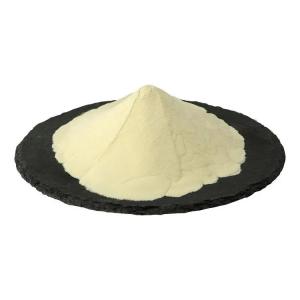Phosphatidyl serine is added to candy coatings.
Time:2025-08-14Phosphatidylserine is a naturally occurring phospholipid that has found applications in various food and beverage formulations. In the confectionery industry, it can be incorporated into candy coatings to create products with enhanced technical and marketing appeal. Its functional characteristics allow manufacturers to explore innovative formulations and product positioning.
Source and Composition
Phosphatidylserine is typically derived from soy lecithin or sunflower lecithin through specialized extraction and enzymatic modification processes. As a phospholipid, it consists of a glycerol backbone, two fatty acid chains, and a phosphoserine head group. In its purified form, it appears as a fine, light-colored powder or as an oil-dispersible ingredient.
Functional Role in Candy Coatings
When incorporated into candy coatings, phosphatidylserine can serve several formulation functions:
Emulsion Stability – Its amphiphilic molecular structure helps stabilize emulsions between fats and aqueous components, contributing to a smoother coating texture.
Improved Dispersion – In powdered candy coating systems, it aids in dispersing lipophilic and hydrophilic components evenly, ensuring uniform color and texture.
Processing Compatibility – It can withstand standard confectionery manufacturing temperatures, making it suitable for both panning and enrobing applications.
Texture Enhancement – By interacting with fats and sugars, it can help create a coating that has a consistent snap or smooth mouthfeel, depending on the formulation.
Application Techniques
Phosphatidylserine can be introduced into candy coatings during the blending stage of fats, sugar powders, and emulsifiers. It is often pre-mixed with other lipid-based ingredients to ensure even distribution. The recommended dosage varies depending on the desired product characteristics and the composition of the coating base, typically ranging from 0.1% to 1% by weight.
Compatibility with Other Ingredients
Candy coatings often include cocoa butter equivalents, confectioner’s sugar, milk powders, and flavorings. Phosphatidylserine shows good compatibility with these common confectionery ingredients. It can also be used alongside colorants, natural extracts, and functional inclusions without compromising stability.
Marketing and Labeling Considerations
From a product development perspective, adding phosphatidylserine to candy coatings can align with consumer interest in premium or specialty confectionery items. It can be listed on ingredient labels under its full name or as part of a phospholipid blend, depending on regulatory requirements in the target market.
Conclusion
Incorporating phosphatidylserine into candy coatings offers confectionery manufacturers opportunities for both functional benefits and differentiated product positioning. Its emulsifying, texturizing, and compatibility features make it a versatile addition to modern candy coating formulations. Careful formulation testing ensures optimal performance and a consistent, high-quality end product.


 CN
CN





